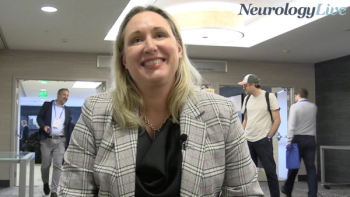
Large-Scale Analysis Finds Associations Between Obstructive Sleep Apnea and Long COVID
Positive associations between preexisting obstructive sleep apnea and probable post-acute sequelae among adults were attenuated but remained significant after adjusting for other comorbidities.
Recently published data from electronic health records of more than 2.2 million Americans with COVID-19 showed that adults with obstructive sleep apnea (OSA) were more likely to experience long-term symptoms suggestive of long COVID than those without the sleep disorder. No significant links were identified in children after controlling for other medical conditions, including obesity.
Across networks, the unadjusted OR for probable post-acute sequelae (PASC) were 1.41-3.93 times greater among adults with a preexisting OSA diagnosis than those without evidence of OSA (N3C: OR, 3.93 [95% CI, 3.84-4.02]; PCORnet: OR, 1.41; 95% CI, 1.36-1.46). The association was attenuated yet still elevated after successfully adjusting for demographic factors, hospitalization, obesity, and comorbidities.
"People with obstructive sleep apnea should also keep up with their vaccinations to minimize the risk of infection," senior investigator Lorna E. Thorpe, PhD, MPH, director, Division of Epidemiology, NYU Grossman School of Medicine, said in a statement. "Part of the challenge is that many of the risk factors for sleep apnea are also risk factors for COVID-19 outcomes. We don’t know entirely why we are seeing this association."
Published in the journal Sleep, the data for the analysis came from 3 databases part of the National Institutes of Health’s (NIH) Researching COVID to Enhance Recovery (RECOVER) Initiative. These included the National COVID Cohort Collaborative (N3C), which included 1.7 million adults; PCORnet, which included 330,000 adults; and PEDSnet, a pediatric-focused network participating in PCORnet, which included 102,000 children. All participants in the analysis had tested positive for COVID-19 between March 2020 and February 2022.
Originally, results followed a similar pattern in children, indicated by unadjusted ORs of 3.28 (95% CI, 2.85-3.76) in the PEDSnet cohort; however, after adjusting for demographic factors, obesity, comorbidities, and hospitalization, no significant difference in the odds of probable PASC was found when comparing children with and without OSA (PEDSnet: OR, 1.05; 95% CI, 0.89-1.24).
READ MORE:
"We still have a lot to learn about the long-term effects of this virus, but this study could inform clinical care by identifying patients who may benefit from closer monitoring," Marishka K. Brown, PhD, director, National Center on Sleep Disorders Research, National Heart, Lung, and Blood Institute, said in a statement.
To assess the impact of the inclusion criteria on the study outcome, investigators conducted a sensitivity analysis in a subset of patients with either a positive lab test or a diagnosis indicating COVID-19. Through this expanded inclusion criteria, an additional 2999 PEDSnet patients, 78,103 PCORnet patients, and 185,928 N3C patients were included in the analysis. The results were similar to the primary analysis, as the odds of developing probable PASC were higher among those with preexisting OSA compared with those without preexisting OSA after adjusting for sex, race/ethnicity, age group, and hospitalization at the time of index infection.
Above all, interaction analysis results were not significant in PEDSnet or PCORnet. In N3C, resulted indicated that evidence of OSA in men increases odds of PASC by 59%, compared with an 89% increase in women (P <.001). These associations were unclear, although investigators noted that the severity of OSA was not controlled for and sleep apnea is more likely to be undiagnosed in women, potentially creating a sample of women who have more severe cases.
"This analysis did not determine what symptoms were most prevalent in patients with OSA who develop probable PASC, but future research could examine the association of OSA and other preexisting conditions with specific PASC variations and the trajectory of impacted patients," the study investigators wrote. "Nonetheless, these findings suggest that patients with OSA may be at elevated risk for PASC after SARS-CoV-2 and should be monitored for post-acute infection sequelae."
REFERENCES
1. Obstructive sleep apnea associated with increased risks for long COVID. News release. National Institutes of Health. May 11, 2023. Accessed May 11, 2023. https://www.nih.gov/news-events/news-releases/obstructive-sleep-apnea-associated-increased-risks-long-covid#:~:text=In%20fact%2C%20multiple%20analyses%20of,published%20in%20the%20journal%20SLEEP%20 .
2. Mandel HL, Colleen G, Abedian S, et al. Risk of post-acute sequalae of SARS-CoV-2 infection associated with pre-coronavirus disease obstructive sleep apnea diagnoses: an electronic health record-based analysis from the RECOVER initiative. Sleep. Published online May 11, 2023. doi:10.1093/sleep/zsad126
Newsletter
Keep your finger on the pulse of neurology—subscribe to NeurologyLive for expert interviews, new data, and breakthrough treatment updates.




































